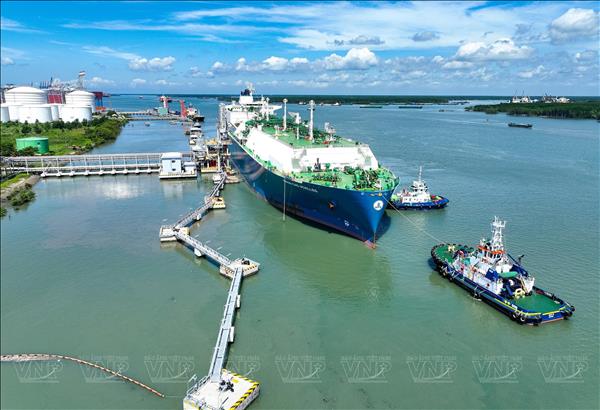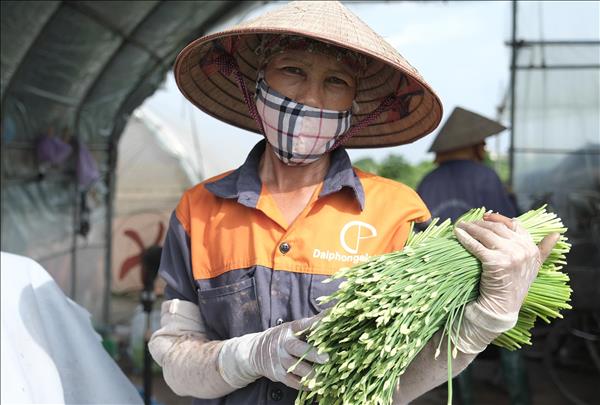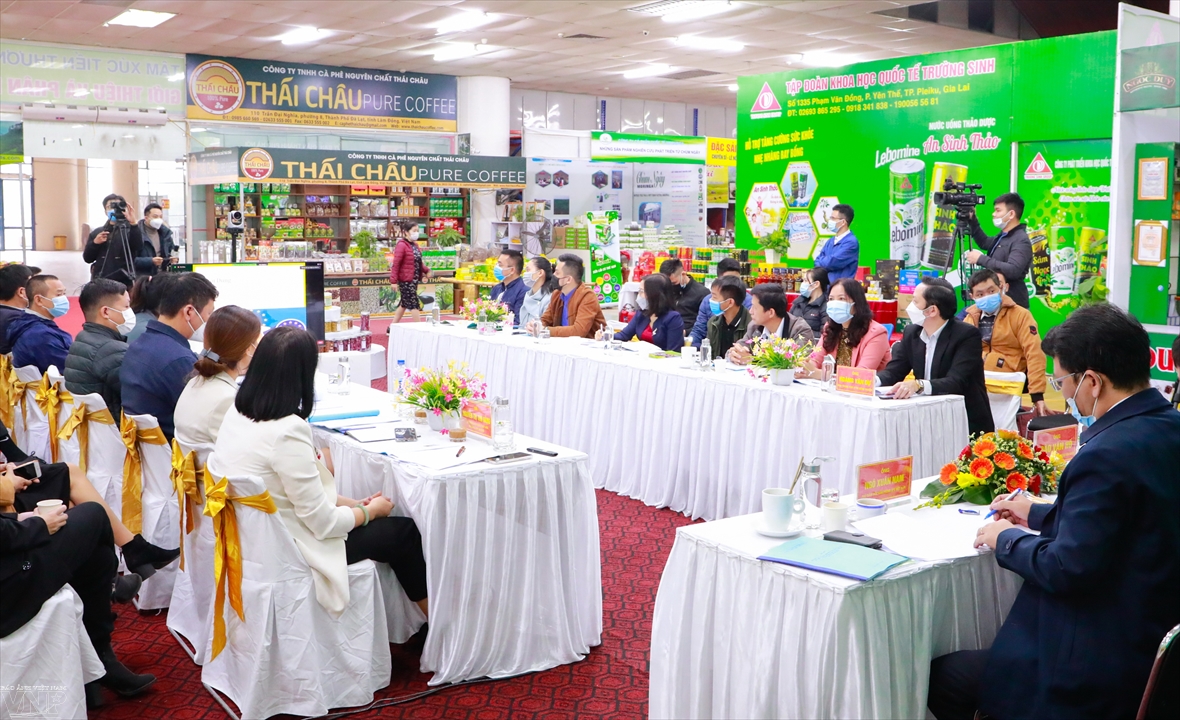EU - Vietnam’s leading partner
According to a handbook compiled by the Ministry of Industry and Trade with support from the EU’s project on trade and investment policy to provide Vietnamese enterprises with necessary information about EVFTA, the two-way trade volume of the past decade increased 10 times, from 4.1 billion US dollars in 2000 to 41.3 billion US dollars in 2015. The EU has now become one of Vietnam’s leading trade partners. Vietnam’s export value to EU reached nearly 31 billion US dollars and its imports from this market was more than 10 billion US dollars.
The EU is also one of the biggest investors in Vietnam with 1,809 effective projects from 24 of its members with a total registered capital of 23.16 billion US dollars; accounting for 8.7% of the total number of projects and 8% of the country’s total registered capital. EU investors concentrate on the fields of the processing industry, manufacturing, electricity production and distribution, real estate, construction and other services. The Netherlands, the UK, France, Luxemburg and Germany are among the countries which have the largest investment, accounting for 84.3% of the EU’s total investment in Vietnam.
According to a handbook compiled by the Ministry of Industry and Trade with support from the EU’s project on trade and investment policy to provide Vietnamese enterprises with necessary information about EVFTA, the two-way trade volume of the past decade increased 10 times, from 4.1 billion US dollars in 2000 to 41.3 billion US dollars in 2015. The EU has now become one of Vietnam’s leading trade partners. Vietnam’s export value to EU reached nearly 31 billion US dollars and its imports from this market was more than 10 billion US dollars.
The EU is also one of the biggest investors in Vietnam with 1,809 effective projects from 24 of its members with a total registered capital of 23.16 billion US dollars; accounting for 8.7% of the total number of projects and 8% of the country’s total registered capital. EU investors concentrate on the fields of the processing industry, manufacturing, electricity production and distribution, real estate, construction and other services. The Netherlands, the UK, France, Luxemburg and Germany are among the countries which have the largest investment, accounting for 84.3% of the EU’s total investment in Vietnam.

Prime Minister Nguyen Xuan Phuc receives Phil Hogan, the EU Commissioner
for Agriculture and Rural Development. Photo: Thong Nhat/VNA
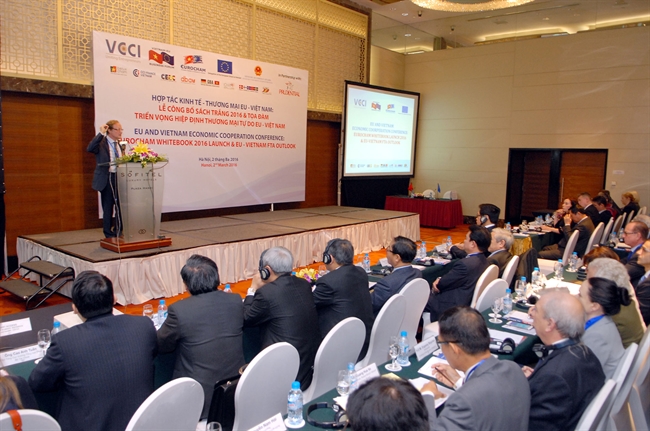
The ceremony to announce White Book 2016 and the talk about the prospect of EVFTA. Photo: Danh Lam/VNA
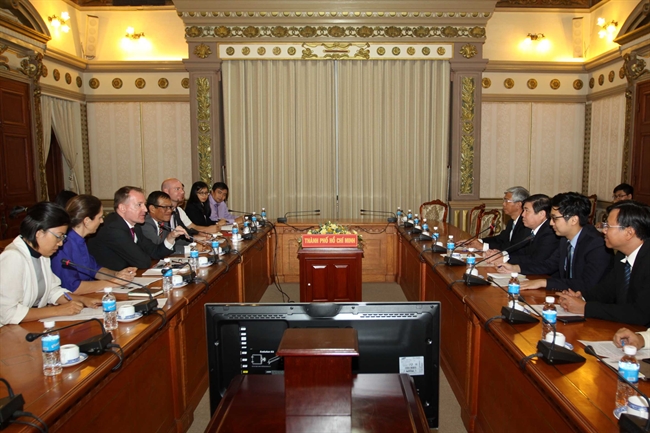
During a meeting between a delegation of EU enterprises and Vietnamese partners. Photo: Thanh Vu/VNA
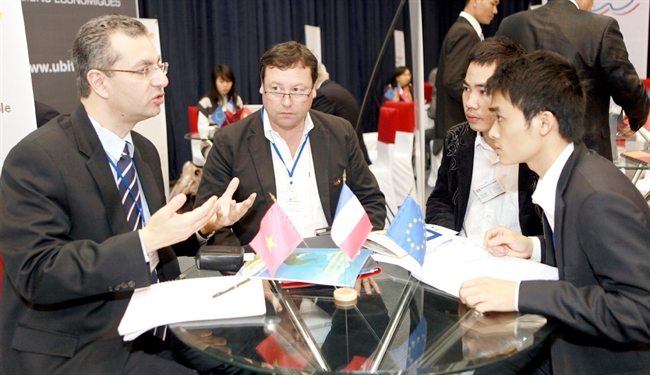
French businessmen look for ivestment opportunities in Vietnam. Photo: Huy Hung/VNA
Vietnam concentrates its import-export activities in Germany, France, the UK, the Netherlands and Italy. Therefore, this year’s trade value between Vietnam and these countries make up 68% of that with EU.
Vietnam mainly imports pharmaceutical products, machines, equipment, automobiles and spare parts, chemicals, dairy products, cattle feed and materials for garments and footwear.
Opportunities for both sides
Phil Hogan, the EU Commissioner for Agriculture and Rural Development, said that Vietnam has a dynamic, fast growing economy and the trade relations between Vietnam and the EU would be stable when both sides enjoy benefits.
After Singapore, Vietnam is the second country concluding negotiations on EVFTA with the EU. Under which, Vietnam and the EU will eliminate duties on more than 99% of tariff lines for the two sides, in which Vietnam will liberalise tariffs over a 10-year period and the EU will do so over a 7-year period. Notably, many goods will have a tax rate of zero percent when the EVFTA takes effect. The group of agricultural products, such as rice, sugar, pepper, cashews, natural honey, and fresh vegetables and fruits and fresh juice will have a great opportunity for export.
In detail, coffee at the tax rate of 0-11.5%; pepper of 0-4%; natural honey of 17.3%; the product of fresh vegetables and fruit and fresh juice at the highest tax rate of 20% will have a zero tax rate as soon as the agreement takes effect. The total export value of these products to the EU in 2015 hit 1.15 billion US dollars from 300 million US dollars.
According to Phung Huu Hao, deputy head of the National Agro-Forestry-Fisheries Quality Assurance Department (Nafiqad), the Ministry of Agriculture and Rural Development, in order to export Vietnam’s fresh fruit to selective markets like the EU, Vietnam needs support from the EU in terms of equipment and working skills in the control experiment room, analysing and discovering the remains of pesticide as a strict requirement of the EU in particular and many countries in the world in general.
According to the handbook, garments and textiles are also Vietnam’s major products exported to the EU with an increasing export value of nearly 3.5 billion US dollars in 2015 from 1.5 billion US dollars in 2007.
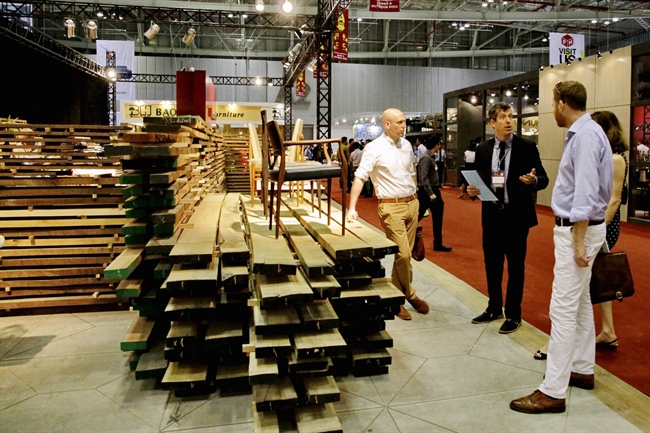
Foreign partners learn about Vietnam’s wood materials. Photo: The Anh/VNA
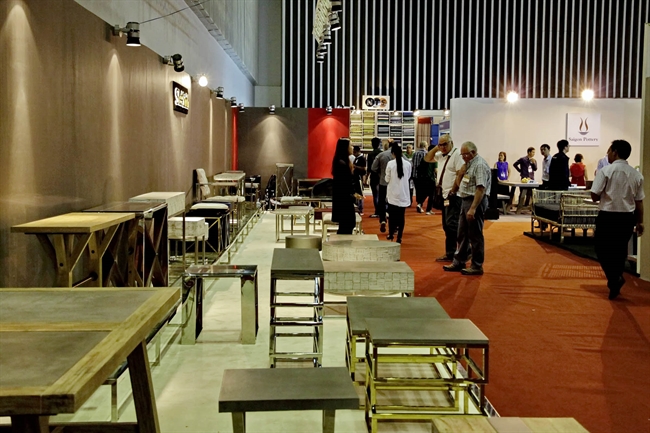
EU is a potential market for Vietnam's wood processing sector. Photo: The Anh/VNA
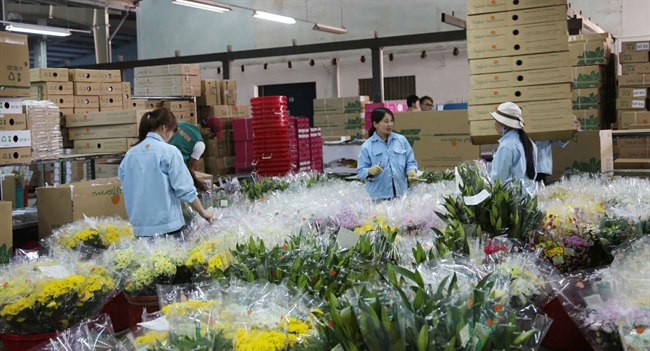
Da Lat flowers for export to the EU market. Photo: Pham Kha/VNA
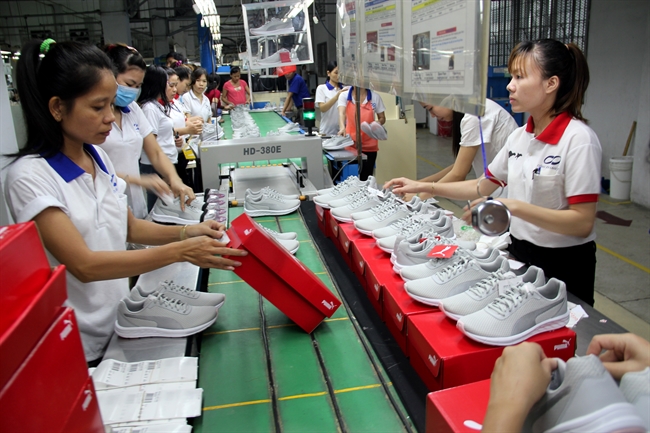
The export turnover of Vietnam’s footwear to the EU rose sharply in 2016. Photo: Duong Chi Tuong/VNA
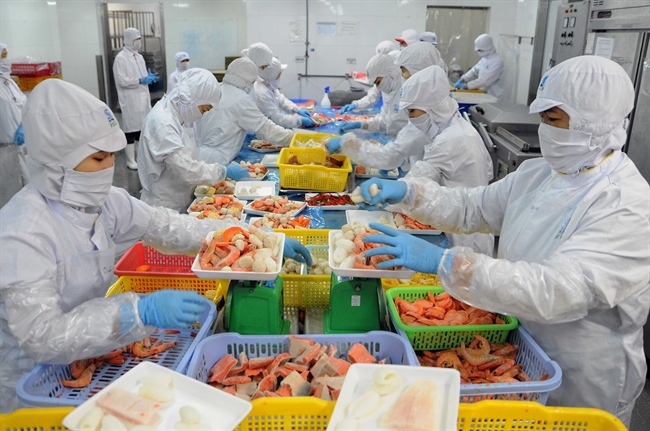
Aquatic products are one of Vietnam’s major exports to the EU. Photo: An Hieu/VNA
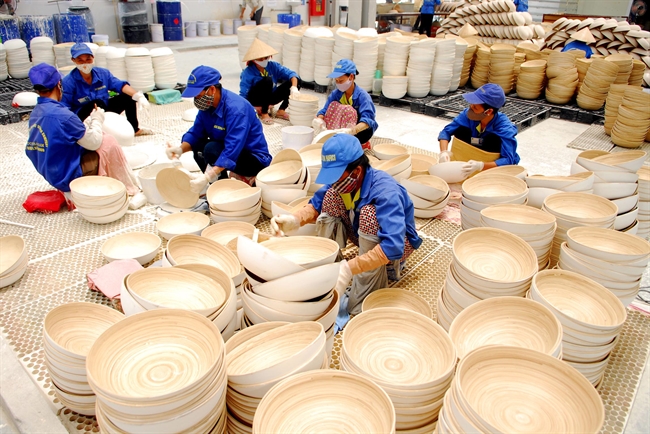
Producing high quality fine arts handicraft products from bamboo and rattan to export to the EU. Photo: Danh Lam/VNA
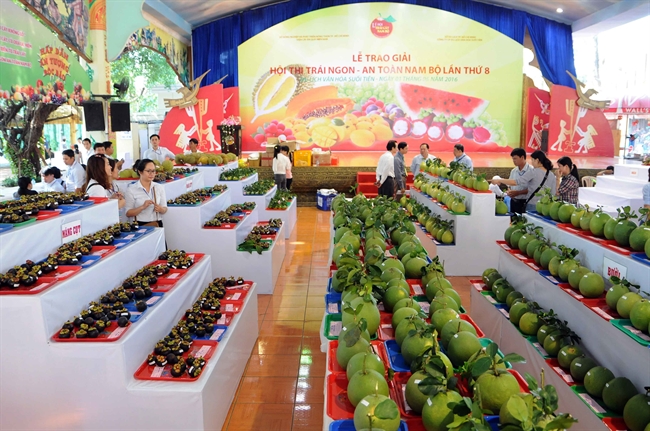
Fresh fruit products have many chances to penetrate into the EU market. Photo: An Hieu/VNA
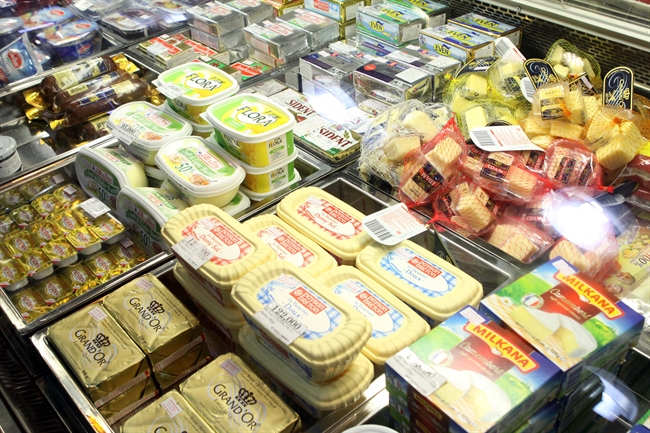
Vietnam now imports a large amount of goods from the EU such as fruit, soft drinks, wine, milk and candy. Photo: Phuong Vy/VNA
When the agreement takes effect, 42.5% of the tax lines for this product at the basic tax from 8-12% will be zero percent. Other products will have a zero tax rate after 3-7 years. 77.3% of Vietnam’s exports tariffs will be eliminated after 5 years and 100% after 7 years.
Footwear, a major export of Vietnam to the EU with 37% of the tax line, equal to 42.1% of the export turnover with the basic tax from 3.5-17% will have zero percent when the agreement takes effect.
For timber products, 83% of the tax line at the basic tax of 0-6% will be eliminated to zero percent when the agreement takes effect; 17% of the remaining products like strand Boards, fiberboard and plywood with the basic tax of 6-10% will be zero after five years.
Computers, electronic products and spare parts are expected to have great potential for export to the EU with an impressive export growth value of nearly 2.8 billion U.S dollars in 2015 from more than 400 million u.s dollars in 2007. Under the agreement, 74% of the tariff lines (including computers) at the basic tax of 0-6% will be zero. The remaining product at the basic tax of 5-14% will be zero after 3-5 years.
With the agreement, besides exports, Vietnam has an opportunity for importing machines and equipment from the EU with a zero tax rate. In detail, 61% of the tax lines at the basic tax of 0-5% will be zero when the agreement takes effect; and the remaining at the basic tax of 3-50% will be zero percent after a maximum of 10 years.
However, besides opportunities, Diego Canga Fano, Director Multilateral Relations, Quality Policies of EU Directorate-General for Agriculture and Rural Development, said enterprises should consider many factors, such as the legal framework and investment environment when investing in Vietnam and affirmed that they will have a big chance of success.
Footwear, a major export of Vietnam to the EU with 37% of the tax line, equal to 42.1% of the export turnover with the basic tax from 3.5-17% will have zero percent when the agreement takes effect.
For timber products, 83% of the tax line at the basic tax of 0-6% will be eliminated to zero percent when the agreement takes effect; 17% of the remaining products like strand Boards, fiberboard and plywood with the basic tax of 6-10% will be zero after five years.
Computers, electronic products and spare parts are expected to have great potential for export to the EU with an impressive export growth value of nearly 2.8 billion U.S dollars in 2015 from more than 400 million u.s dollars in 2007. Under the agreement, 74% of the tariff lines (including computers) at the basic tax of 0-6% will be zero. The remaining product at the basic tax of 5-14% will be zero after 3-5 years.
With the agreement, besides exports, Vietnam has an opportunity for importing machines and equipment from the EU with a zero tax rate. In detail, 61% of the tax lines at the basic tax of 0-5% will be zero when the agreement takes effect; and the remaining at the basic tax of 3-50% will be zero percent after a maximum of 10 years.
However, besides opportunities, Diego Canga Fano, Director Multilateral Relations, Quality Policies of EU Directorate-General for Agriculture and Rural Development, said enterprises should consider many factors, such as the legal framework and investment environment when investing in Vietnam and affirmed that they will have a big chance of success.
By VNA/VNP

